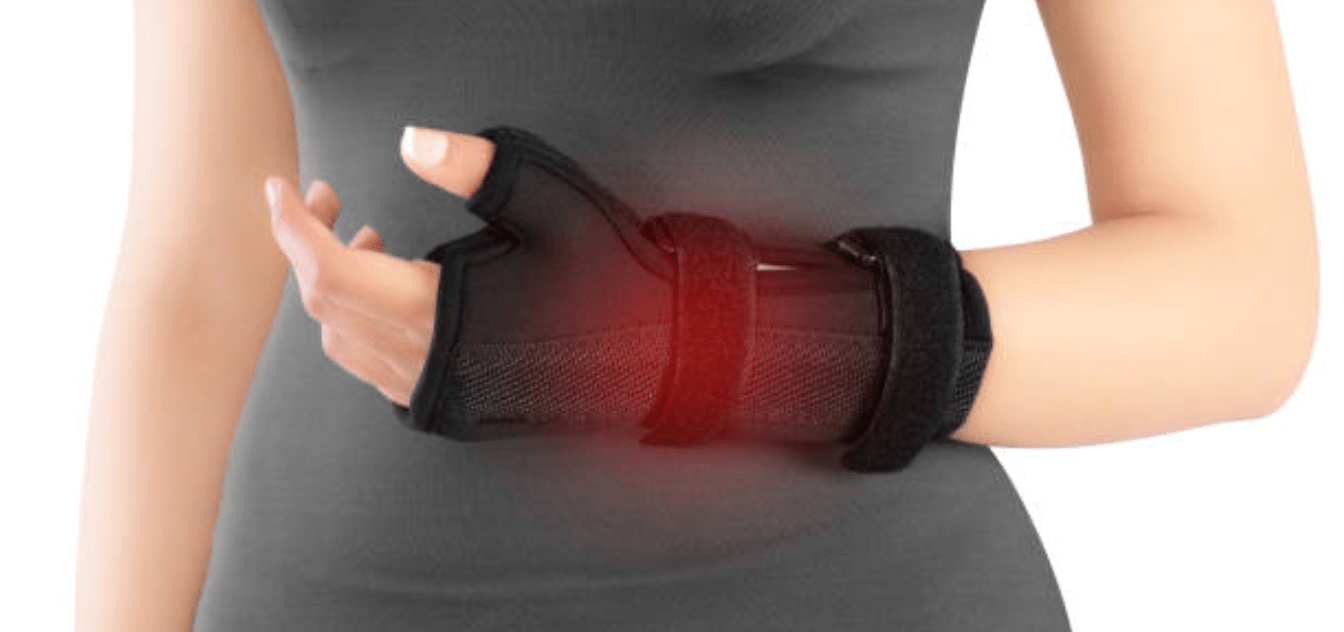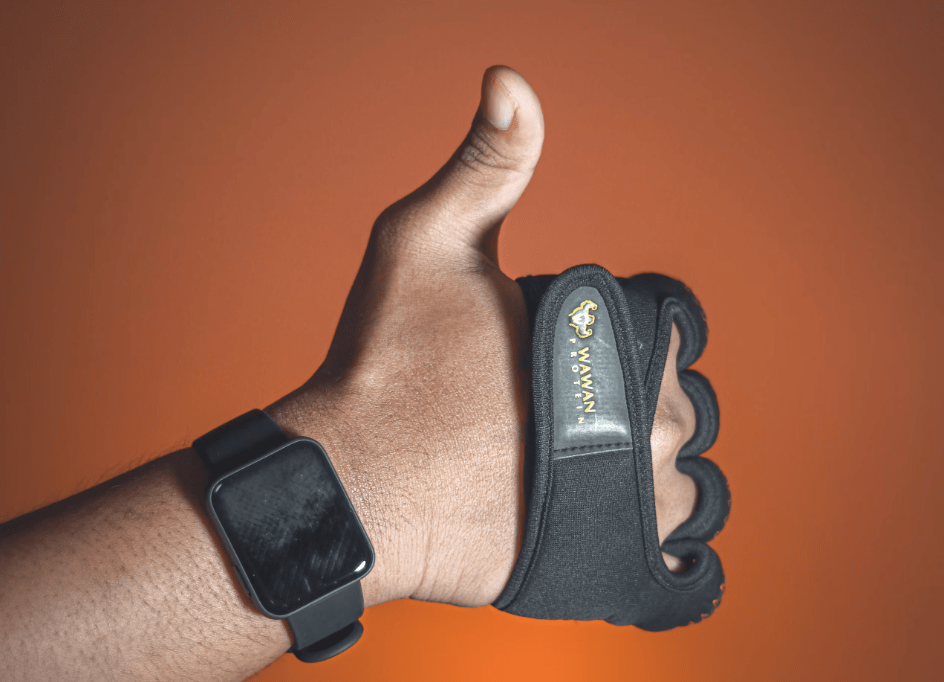Carpal tunnel syndrome is a common condition resulting from repetitive wrist movements that cause numbness, weakness, and tingling.
However, a carpal tunnel brace can help to reduce these symptoms. These braces are intended to reduce pressure on the median nerve in the wrist, thereby relieving pain and promoting healing.
However, with so many options available, choosing the best carpal tunnel wrist brace can be difficult.
So, in this article, I will tell you about tunnel syndrome and help you to choose the best brace. Let’s get started.
What Exactly is Carpal Tunnel Syndrome?
Carpal tunnel syndrome is a common condition of the hands and wrists that causes compression of the median nerve in the carpal tunnel.

This nerve regulates sensation and muscle movement in the thumb and first four fingers.
However, frequent pressure on the median nerve can disrupt daily activities such as opening jars and holding objects.
Symptoms of Carpal Tunnel Syndrome
Carpal tunnel pain starts slowly and over time it gets worse. The symptoms of carpal tunnel include numbness, tingling, pain and weakness in your hands and wrists.
It might also weaken the muscles of your hand which will make it difficult for you to hold the objects.
If you ignore it or are left untreated the carpal tunnel syndrome can permanently damage your median nerve and you might experience this pain for a lifetime.
What are the Causes of Carpal Tunnel Syndrome?
There is no specific reason for carpal tunnel syndrome. But, experts believe that some people are more likely to develop it than others.
For example, someone with naturally smaller passageways may be more vulnerable to median nerve damage or irritation.
Additionally, pregnancy and menopause might also result in additional fluid retention which will put additional strain or pressure on the median nerve.
Some other risk factors include such as diabetes, arthritis, and repetitive tasks such as driving, or typing on the keyboard.
This means people who continuously type, text, or make repetitive hand motions daily are at a high risk of getting carpal tunnel syndrome.
Carpal tunnel syndrome can affect anyone regardless of age or gender. If you are experiencing any such carpal tunnel syndrome symptoms then you consult a doctor, perform a diagnosis and start the treatment.
Best Treatments for Carpal Tunnel Syndrome
Doctors or physicians will examine and will perform conservative treatment which will get your inflammation under control.
Medications
If you have just started experiencing the symptoms of carpal tunnel then probably a pain reliever from a medical store can help you out.
Your doctor will prescribe you appropriate medication along with a pain reliever which will help you ease pain.
Cortisone Shots
If you are experiencing a significant amount of pain then your physician might recommend a cortisone shot which will reduce the inflammation. Thus it will provide you with some relief within a couple of days.

Carpal Brace
The carpal brace is among the trusted methods to get relief from carpal tunnel syndrome. Your doctor might ask you to wear a carpal tunnel brace which will immobilize your wrist and relieve pressure on your median nerve.

Physical Therapy
Physical therapy is also among the popular medical treatments that will help in healing from carpal tunnel syndrome.

Performing some gentle stretches and mild exercises will strengthen the muscles and tendons surrounding the nerve.
The overall goal is to gain back your normal flexibility. For further details on best joint stretching exercises, check out our article on the best exercises for stretching joints.
How Does a Carpal Tunnel Wrist Brace Help?
Carpal tunnel can be extremely painful fortunately as discussed above there are several conservative treatment solutions that will provide you relief.
A wrist splint for carpal tunnel will eliminate pressure on the median nerve. These braces will support your wrist in maintaining a neutral position.
They also limit the wrist’s motion range which provides comfort and allows it to heal. A wrist brace for carpal tunnel and braces can help you reduce the pain and inflammation associated with it.
What to Check in a Carpal Tunnel Brace?
Carpal tunnel braces are among the most common treatment solutions for carpal tunnel syndrome and there are various types to choose from.
If you are looking for a carpal tunnel wrist brace that can resist almost any activity then you should choose the one which is specially designed for carpal tunnel.
These braces provide support and stabilization for your wrist. They are specially designed to be comfortable even after prolonged use.
Carpal tunnel wrist braces are made out of materials that keep your skin cool and dry. However, there are some points to keep in mind while choosing a carpal brace. They are as follows:
- Immobilization of the wrist: It is important to choose a carpal tunnel brace that provides adequate support without being too tight.
- Material: Check the materials in the carpal tunnel wrist brace to prevent skin damage.
- Fitting: Make sure the splint or brace fits properly and does not slip down your arm.
- Comfort: Choose a brace that is comfortable to wear
Design: The brace should be very comfortable and it must be simple to put on and take off.
For How Long Should You Wear a Carpal Tunnel Brace?
Tingling, numbness and wrist pain are common symptoms of carpal tunnel syndrome. A small opening in the wrist where tendons and ligaments pass through is called the carpal tunnel.
The syndrome develops when the tendons expand up or become swollen, compressing the nerve.
However, you can reduce some of this pressure and symptoms by wearing a wrist brace.
However, it’s crucial to wear the brace for the appropriate duration of time. The brace can worsen joint pain and stiffness if you wore for an extended period.
Doctors suggest you wear the carpal brace especially while performing activities like typing or cycling. The aim is to offer stability and support comfortably without restricting the movements.
Thus, a wrist brace can be a useful tool for treating carpal tunnel syndrome.
How to Wear a Wrist Brace Properly and When Should You Take It Off?
Wearing a wrist brace is recommended by medical experts because it provides support and protects the wrist from carpal tunnel syndrome.

However, there are some points to keep in mind while wearing a wrist brace. They are as follows:
- Firstly, make sure the brace is perfectly fitted. It should not hurt or restrict circulation, making it comfortable to wear for prolonged periods.
- You should take breaks from wearing the brace throughout the day. This will reduce the stiffness and minimize the dependency on the brace.
- If you are experiencing any discomfort or pain while wearing the brace, immediately remove it and consult with your doctor.
How Tight Should You Wear a Wrist Brace for Carpal Tunnel Syndrome?
The answer totally depends on the severity of the condition.
For people affected with mild carpal tunnel syndrome, a loose-fitting brace might get you relief from symptoms.
However, in severe cases, a tighter-fitting brace may be required to immobilise the wrist and prevent further damage to the median nerve.
Ultimately, you should consult with a healthcare professional to determine the best brace for your carpal tunnel syndrome.
How to Choose the Right Carpal Wrist Brace for You?
When it comes to carpal tunnel wrist braces, there is no one-size-for-all. The type and size of brace you need depend on your specific condition.

- For example, people with carpal tunnel syndrome may benefit from a wrist split, which keeps the hand and wrist in a neutral position.
- Arthritis patients can find relief by wearing a brace that provides joint support and stability.
- If you have tendonitis, a brace that applies the proper pressure to the affected area can be beneficial.
Wrapping up
Finally, if you’re experiencing carpal tunnel syndrome symptoms such as numbness, tingling, or weakness in your hands and wrists, don’t worry- relief is possible!
A carpal tunnel brace can be helpful. It will provide support and relieve pressure on the median nerve. But, while selecting the best brace for you, consider fit, material, comfort, and design.
Remember to wear the brace for the appropriate time, and make sure you take breaks. And, consult your doctor or physical therapist to determine the most effective treatment plan.
With the right treatment approach and support, you can get back to your daily activities without pain and along with a stronger wrist.